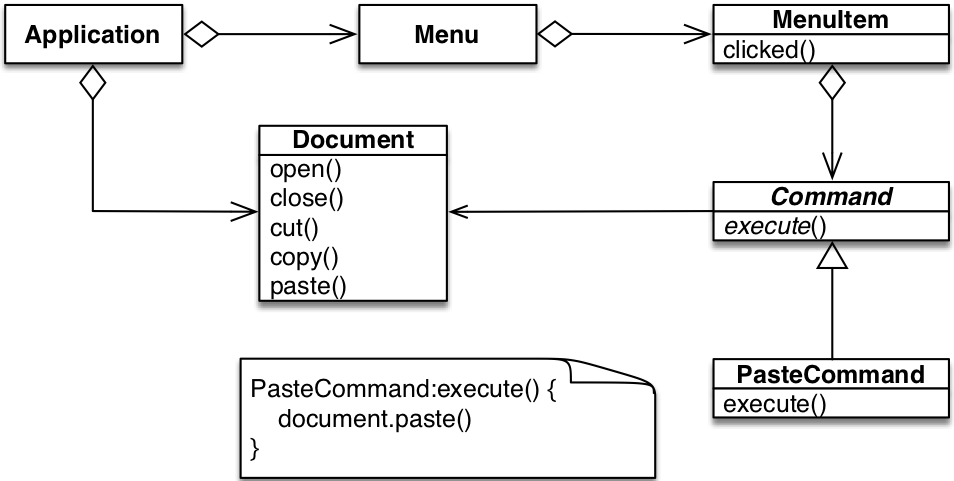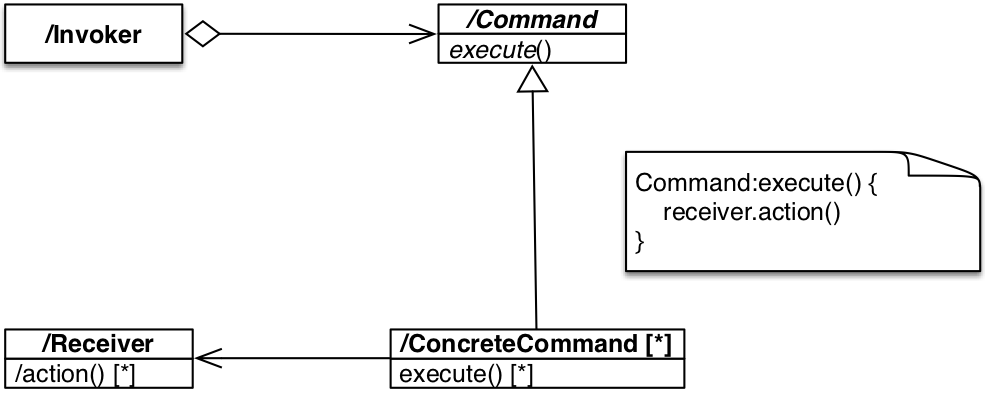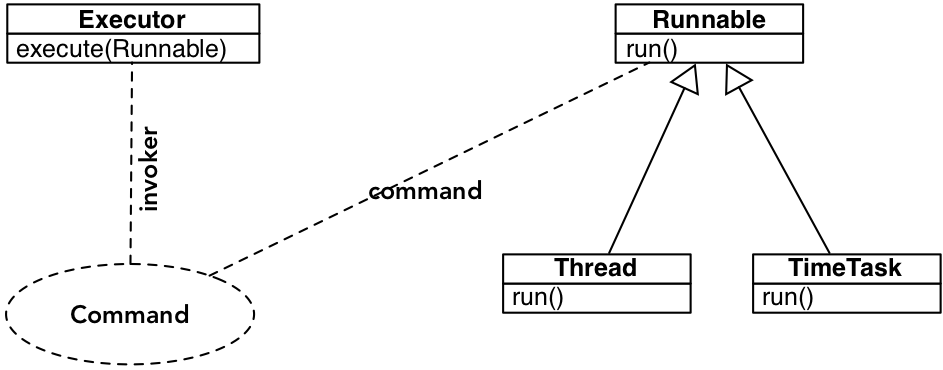(int a, int b) -> { return a + b; }
(a, b) -> {
System.out.println(a + b);
return a + b;
}
() -> System.out.println("Hello World");Command
Gamma et al. 95
Intent
Encapsulate a request as an object, thereby letting you parameterize clients with different requests, queue or log requests, and support undoable operations.
Motivation
Sometimes it’s necessary to issue requests to objects without knowing anything about the operation being requested or the receiver of the request.
For example, graphical user interface buttons: only clients that create and use the button can implement the actions linked to this button.
Example

Solution
Implement requests as objects, whose classes are subclasses of the “Command” abstract class, which defines an interface for operation execution.
Structure

Implementation Tradeoffs
Commands store state information for undo and redo operations.
Commands may be composed (see Composite pattern).
Sometimes, commands may implement operations directly, without delegation.
Author and Date
Design Patterns: Elements of Reusable Object-Oriented Software. Erich Gamma, Richard Helm,Ralph Johnson, and John Vlissides. Addison Wesley. October 1994.
More Examples
java.lang.Runnable

More Implementation Tradeoffs
Command in Java 8 with Lambdas
Lambdas
Lambdas are new in Java 8 (but implemented in many languages)
Anonymous function (unnamed)
format:
(arguments) -> (body)Improve code conciseness and permit to handle operations as objects
Java Collection Frameworks Example
List<String> tags = new ArrayList<>();
// The normal syntax of the forEach lambda
tags.forEach((String each) -> {System.out.println(each);});
// Sugar syntax to shorten the lambda
tags.forEach(each -> System.out.println(each));
//or
tags.forEach(System.out::println)The Macro class
public class Macro {
private final List<Command> cmds;
public Macro() {
cmds = new ArrayList<>();
}
public void addCommand(Command cmd) {
System.out.println(cmd);
cmds.add(cmd);
}
public void run() {
cmds.forEach(Command::execute);
}
}Adding commands to a macro
Macro macro = new Macro();
Editor editor = new EditorImpl();
// Java 7 version: anonymous classes.
macro.addCommand(new Command() {
@Override public void execute() {
editor.open();
}});
// Java 8 version: lambdas
macro.addCommand(() -> editor.open());
// or:
macro.addCommand(editor::open);
macro.run();